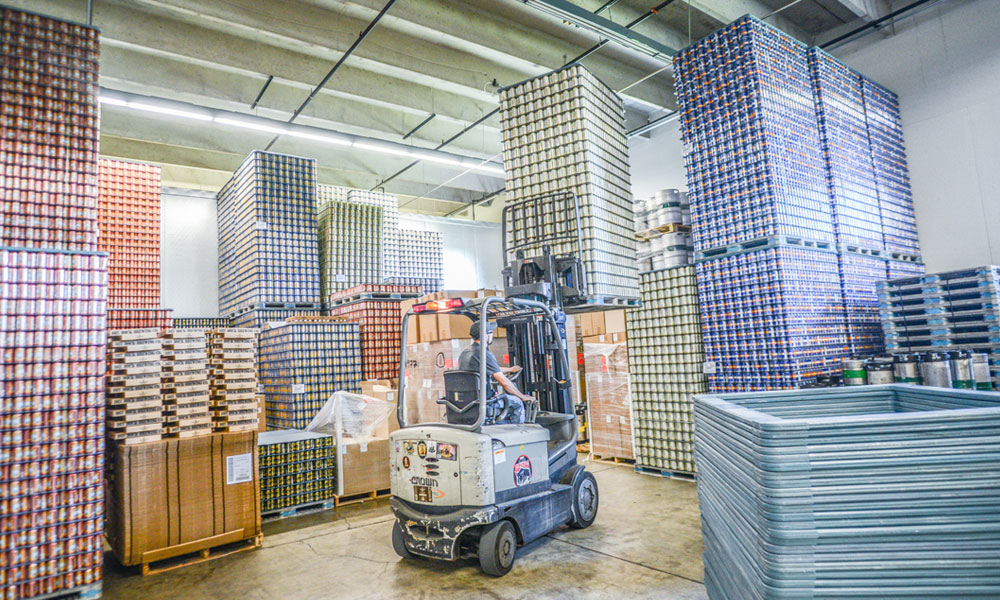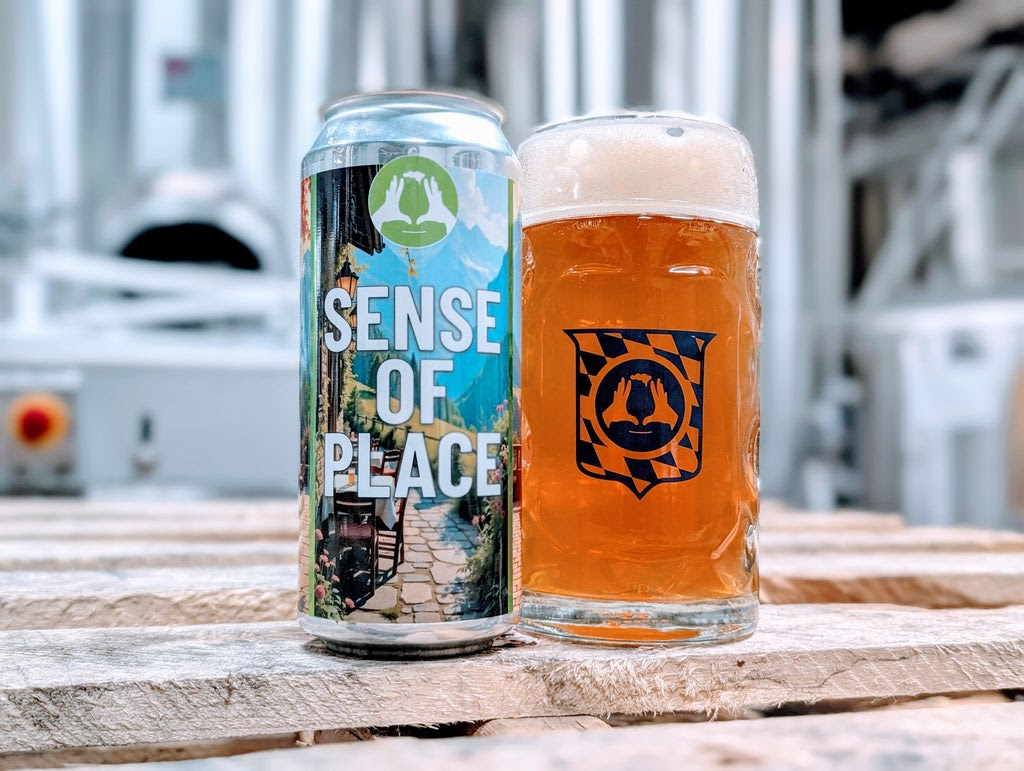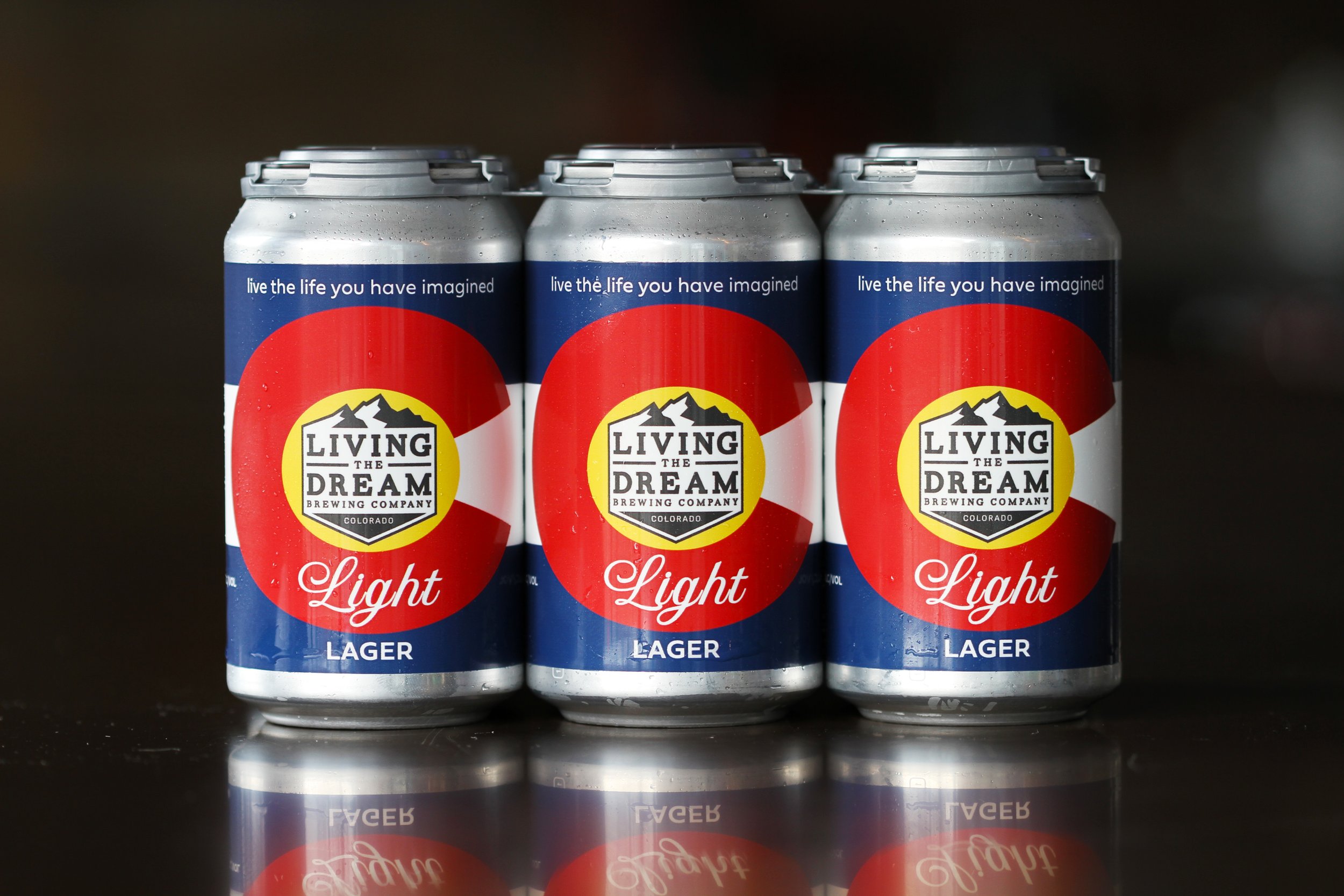
I last wrote about cannabis and the beer industry a little over two years ago. The basic premise back then was pretty simple: Although it was possible that in the future we might see some effects, at that point, I saw little to no evidence that legalized recreational cannabis was having an effect on beer sales. The release of a new report from the Distilled Spirits Council (DISCUS) that argued the same thing prompted me to re-visit the evidence.
Let’s start with what has changed. 11 states have seen changes to the status of cannabis (7 by ballot measure, 4 via the legislature), with 7 allowing medical marijuana and 4 allowing recreational use. In addition, beer volumes declined around a percent in both 2017 and 2018. This overall weakness of beer volume, coupled with increased access to cannabis, seems to be the primary source of worry motivating theories about a link between the two products.
That said, if you look below those headline numbers, from the evidence currently available, I would say the same thing I said in late 2016: I currently see no evidence that marijuana legalization (medicinal or recreational), has had a clear effect in a singular direction on beer sales. The rest of this post will cover why.
Beer Sales over Time and State-by-State Variations
Overall Beer Sales Are Declining
Let’s start with the strongest evidence. Beer sales themselves. We can look at this in two ways. The first is identifying the trend in overall beer sales, and trying to determine whether that trend has changed as marijuana has become more commercially available (legally).
Here is the last ten years of per capita beer sales:
Analyzing this, you can get a very, very slight improvement by modeling this decline as exponential rather than linear, but the exponential effect is tiny. In other words, beer has been declining for a while, and there is little evidence that the trendline of that decline is changing, either for better or worse. In addition, there are plenty of conventional explanations for this decline. The primary two are demographics (the American population is aging, and people tend to drink less beer as they age) and prices (off-premise beer prices went up 18% from 2008-2018, versus 4% for spirits and 1% for wine). Together, both of these factors would suggest you’d see beer losing per capita volume to wine (demographics) and wine/spirits (demographics and prices) regardless of marijuana.
So to recap – we haven’t seen much change in the overall beer trend over the last decade and the overall decline we can largely explain with demographics and prices.
State-by-State Trends
What about at the state level?
To look at this, I used the Beer Institute data on state-by-state shipments YTD through October 2018 (a good proxy for sales), and broke them into three groups of states using marijuana laws (taken from BDS Analytics). To make sure that any changes aren’t driven by 21+ population changes, the numbers below are per capita numbers using Census Bureau data.
Here are the state-by-state trends:
States
Per Capita Beer Shipments (Jan.-Oct. 2018 vs YA)
Recreational States
-1.2%
Medicinal States
-2.1%
Illegal States
-2.1%
We can also put the time series trend and this state-by-state breakdown together. To do this, we need to understand if these three sets of states were already trending differently in the past. Maybe recreational states used to be growing at 2% per capita and illegal states were already -2%, so there is actually an effect. However, that’s not the case. Looking at per capita shipments from 2007-2017, we find the following (based on their current status):
States
Per Capita Beer Shipments (2007-2017, annualized)
Recreational States
-1.3%
Medicinal States
-1.6%
Illegal States
-1.5%
There wasn’t that much variation in the change of beer shipments per capita in the decade prior to 2008, so the data we are seeing in 2018 isn’t likely to be caused by some other underlying factor that we aren’t controlling for.
So simply put, beer shipments are the best (or least worst) in states where cannabis is the most legal, that probably isn’t due to a variable we are missing, and in general there is no clear pattern between legalization and beer volumes.
The Problem with Surveys
Given that the overall data don’t support a relationship, why are so many people concerned about declining beer sales in the face of cannabis legalization? Well, in addition to the overall softness of beer trends, I think the biggest reason is that lots of survey data suggests that people think they may consume less beer going forward if marijuana is legalized. We’ve presented some of this data to Brewers Association members in the past. In their 2016 Year-End Review Power Hour, the IRI Group included data from CannaBiz that stated 27 percent of “cannabis-interested beer drinkers” surveyed will decrease their retail beer consumption if cannabis is legalized.
So why haven’t these surveys led to some of the predicted drops? I think there are a couple of reasons.
Future Behavior is Hard to Predict
The first is that surveys aren’t really that good at predicting future behavior. Consumers are pretty good at telling you what they are doing currently (even there you get biases), but when it comes to the future, there are a whole host of issues, including that we tend to overestimate our intentions, we try to guess what the person giving the survey wants us to say, and more. You can spend months reading about all the ways humans screw up future predictions in academic journals ranging from marketing, to behavioral economics, to forecasting statistics. So just because people say something doesn’t mean it is going to happen. We’ll revisit this point when we talk about mechanisms below, since many consumers probably haven’t actually thought about this in much detail.
We could probably generalize this point to “don’t trust everything you see in surveys,” particularly since cannabis surveys concern an activity that is still illegal federally, and it’s almost certain that some percentage of people aren’t comfortable giving real answers. As a side note: this is one reason to be cautious about surveys suggesting that the percentage of Americans using cannabis is rising. It’s quite possible that survey numbers may rise simply as cannabis use becomes more socially acceptable, even if the exact same number of people are consuming cannabis (you can actually see this effect in states post-legalization).
Surveys Only Provide a Partial View
The second is that the surveys are only a partial view. That survey above is about “cannabis-interested beer drinkers.” What percentage of beer drinkers are those? What about the trends of those not interested in cannabis? What about those who already consume cannabis who might cut back? The surveys tend to only be focused in a particular direction. If you consume alcohol, are you going to cut back and shift to marijuana? What about asking marijuana consumers if they might shift more into alcohol?
For the first time that I’m aware of, we’ve begun to actually look at this in both directions for craft drinkers via our latest Nielsen survey. We asked craft drinkers who were drinking less if consuming more marijuana was one reason why. BUT, we also asked those who were drinking more craft if consuming less marijuana was one reason why. And guess what? The two groups basically balanced out. So yes, some people were consuming less craft because of their cannabis usage going up, but an equal number were consuming more craft as their marijuana usage went down.
Causal Mechanisms: The ‘Why?’
If you were a student in one of my research methods courses, one of the things I would try to drill into you are the criteria for causality. How do we know that one thing caused another? There are four primary criteria:
- Time: did the thing (A) that may have caused (B) come first? And can we rule out that (B) wasn’t already changing in that way before (A)?
- A relationship: Can we show a relationship between A and B? I.e. when (A) changed, did (B) also change in some predictable way?
- Other explanations (or confounds): Can we rule out other causes of (B)? So if (B) goes down, can we rule out things other than (A)?
- Causal Mechanism: Do we have any explanation for why (A) might have caused (B)?
Hopefully, I’ve already shown you that the first three fail in this case. Beer was going down before cannabis, and that once states legalized, the trend didn’t change (criteria #1 fails). There isn’t any relationship between legalization status and beer trends (criteria #2 fails). And we can explain most of beer’s decline due to competition with wine/spirits using things like demographics and prices (criteria #3 fails).

But in case those other three things change, it’s worth completing the exercise. What if those surveys about the future were correct? What if marijuana did drive down beverage alcohol consumption. Why would that be the case? What evidence would help us prove this final step?
There are two primary causal mechanisms typically provided when linking marijuana and beer/beverage alcohol. The first is occasions, the second is price.
Causal Mechanism 1: Occasions
The occasions argument is that people might use cannabis in similar occasions that they currently use beer, and so, as cannabis is more available and socially acceptable, might substitute cannabis in those occasions more and more for beer (or beverage alcohol in general). This is one place I think the link between survey responses and actual behavior break down. In many occasions, even if cannabis is recreationally legal, it’s still pretty hard to substitute. Yes, someone can consume an edible product before going out, but bars and concert venues don’t serve cannabis. Yes, you could bring cannabis to a friend’s barbeque, but you might still want a refreshing beverage.
I bring this up because this is something that as an industry we can measure and watch. How many venues are there to purchase cannabis that could compete as occasions? How many cannabis products are direct substitutes for beer occasions – think things like the THC non-alcoholic beers that several firms are putting in the marketplace soon. Right now it’s actually pretty difficult for most consumers to substitute, and while that is likely to change going forward, we should actually try and measure those changes rather than relying on anecdote or surveys. The latest farm bill updated rules for industrial hemp. What happens if/when CBD drinks start hitting the marketplace? To watch for this, we need to go beyond surveys and actually look at occasions – focusing not just on beer, but total beverage alcohol.
Causal Mechanism 2: Price
The other mechanism is price. People have a certain amount of money to spend, and if they spend it on cannabis, or even kombucha, they have less to spend on beer. Currently, there are two problems with this argument. One, people forget that many consumers were already spending a lot on cannabis, even if it wasn’t legal (some estimates were that the North American black market was a $100 billion industry). And second, legalization and increased supply has led to price drops in many states. As one of the states that allowed the greatest market freedom, Oregon is a poster child for price declines, with the Oregon Office of Economic Analysis measuring price drops of 50 percent after legalization. These two mechanisms also interact, as lower prices might lead to consumers considering marijuana in more occasions. Here I’d suggest watching for a decline in beverage alcohol spending as a percentage of income. A recent paperfrom the Federal Reserve suggests that millennials are spending the exact same percentage of their income on beverage alcohol as the previous generation. If that starts going down, that’s when it is time to worry.
My point here is two-fold. First, that these are exactly the kind of shifts that consumers answering surveys won’t think about at all. Very few people guessing about future behavior will be quickly calculating price declines, their spending power, and in which occasions this behavior might actually occur. Second, and more importantly, rather than just assuming (A) is going to lead to (B), we need to more deeply understand the pathways that would cause that change so we can measure and track whether it is occurring. Understanding things like relative prices, elasticities, availability, and substitutability will be a far more rigorous way to study the relationship between alcohol and cannabis going forward.
The Future and Other Considerations
To close, although the evidence above has hopefully convinced you that cannabis isn’t cratering beer sales, all of this is subject to change. The causal mechanisms outlined above are plausible. We could see state-by-state beer trends shift over time as demographics and consumer preferences shift. In addition, although this analysis took on beer at the meta-level, there remains the distinct possibility that there are already real, but off-setting effects in different parts of the beer or beverage alcohol market. Cannabis could be driving down sales of value brands while lifting super premium. To know, you’d want to complete this same exercise for just those segments. The same is true for wine or spirits. Although I find the arguments DISCUS made about spirits sales persuasive for the broad category, if I owned a distillery, I’d certainly be trying to analyze the sub-parts of the market where I sold products.
Finally, none of this means that cannabis isn’t having indirect effects. I’ve included a few slides on this in recent presentations, but I’m 100 percent confident that cannabis is having effects, we just need to think beyond direct sales. If you’re a taproom or a brewpub in a state with recreational cannabis, you should probably think about how you’re training your staff to recognize different forms of intoxication. States will need to think about drugged driving and how that interacts with existing driving under the influence laws. The beer industry has seen numerous workers leave for cannabis businesses, and the beverage alcohol labor market is likely to continue to overlap with that of cannabis. Beer companies are investing in cannabis businesses, and so splitting their focus (note: in an industry that may be worth $100 billion, this may make business sense even if beer sales won’t go down). Distributors in states with legal recreational sales may choose to invest in cannabis distribution and so have split attention. If you’re competing for warehouse space in a state that mandates indoor grows, you should plan on cost increases for rent. What if we move to a national market? Where do you think most cannabis would be grown? I don’t have the answer – but I’d certainly start watching the map of cannabis grows in Washington and land prices in Yakima with greater interest.
Here’s a map of licensed Washington grows below – there are already plenty in an around Yakima:
As the cannabis industry grows, it’s time for beer to stop treating it as a monolithic boogeyman that is only going to lower sales, and start analyzing it like we do so many other things: a part of the complex marketplace for consumer goods, occasions, labor, and more.










0 comments (click to read or post):
Post a Comment
Please leave a comment...I do moderate each comment so it may not appear immediately...and please be nice! You can also comment using Disqus (below) or even comment directly on Facebook (bottom).